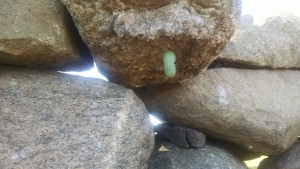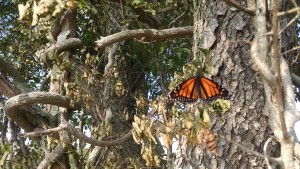One of the most anticipated rites of late summer in Southern New England is the visit of the Monarch Butterflies to open fields and roadsides where milkweed thrives — and these magnificently graceful and colorful butterflies stop to breed, lay their eggs, and create a new generation to take its place in a unique odyssey reaching from Canada as far south as Central Mexico and the Yucatan peninsula. Monarchs are the only butterfly species that migrates across an entire continent, with at least two and as many as four generations needed to complete the entire cycle. It is a wonder that each generation somehow knows where it has to go without ever having been there.
The SKLT crew that is rebuilding the walls of Weeden Farm has developed a close relationship with deep orange-and-black beauties as they blow into town in early July, and for the next month do aerial dances, mate while aloft, and lay their eggs on the milkweed growing in the surrounding fields. As August passes into September we notice growing numbers feeding among the milkweed and other flowers,—and then the surprise of brilliant green chrysalises dotted with gold attached here and there on the rocks of the stone wall! A surprise —as most of us as children saw our first chrysalis hanging from milkweed leaves. We made sure these Monarchs-to-be were protected from harm during the construction work. By October the travelers will be off on their way south. The attached photos were taken by Clark Collins.

Over the past few years there has been much concern that the Monarch species is in great peril due to many causes, particularly loss of wintering habitat in Mexico, but also growing pesticide use and increasing efficiency of harvesting techniques and agricultural uses throughout North America. Over the past ten years, it has seemed that Monarchs were significantly in decline on Weeden Farm— however this year is the best year in our memory. An informal count over one acre totaled at least 44 adults, and we noted over 20 chrysalises on the walls and other objects at the edge of our fields. We hope that this good sign for Monarchs.
To learn more about Monarchs we recommend visiting the Xerces Society web page http://www.xerces.org/monarchs/ or Monarch Butterfly USA web page http://www.monarchbutterflyusa.com

